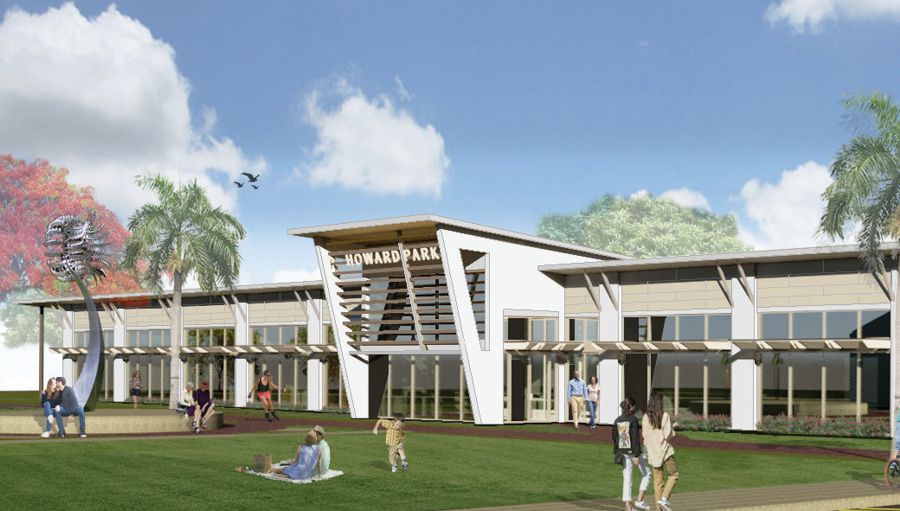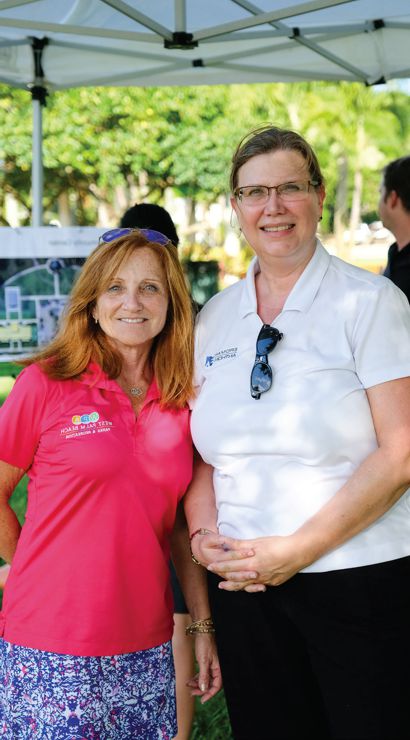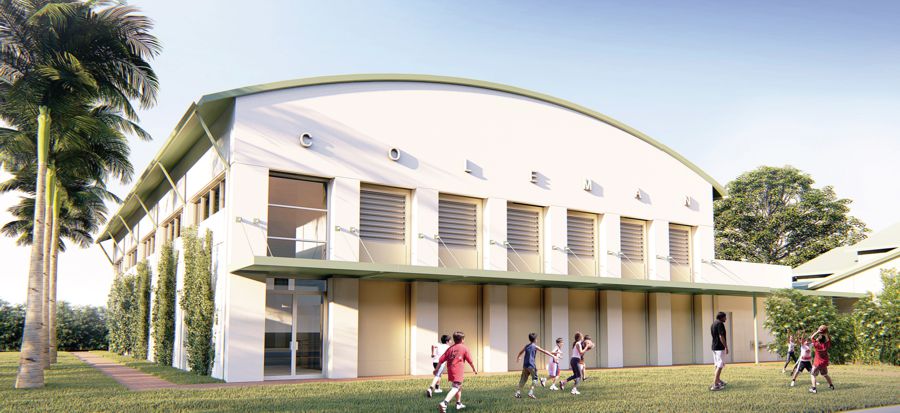Community centers are growing in importance across the United States. As reported in a November 2011 South Source article, community centers facilitate a sense of belonging, improving residents' quality of life, property values and even tourism.
What goes into a great community center? A 2017 National Recreation & Park Association (NRPA) poll highlighted the importance of community centers to people across generational strata. In addition to traditional services such as fitness and aquatic facilities and out-of-school programming, between one-third and one-half of the survey's 1,000 respondents said they valued inclusive facilities for all needs and abilities, access to internet-enabled computers, health clinics and services, healthy living classes, programming for older adults and nature-based activities.
Such opportunities factored in the City of West Palm Beach, Fla., when a county sales tax referendum passed that would fund renovations of its community centers. The city was presented with an incredible opportunity to update the centers, several of which were built between the mid-1960s and early 1970s, or create new ones—an effort they had adopted in their 2015 master-planning process.
Community input decisively factored in this process, and with this new funding, the city could fully leverage previously unavailable opportunities. Their aim: to optimize outcomes for the community by delivering on their requests.
Strategies for Optimizing Community Outreach
Community engagement sessions, consistent stakeholders and committed citizen champions are key variables in the formula for optimal community involvement.
Engagement Sessions. Professionally led but informal community engagement sessions are a valuable starting point to gather information. In ways that are comfortably conducive to participant input, the project committee can present existing conditions and invite community members to share their input in a casual, conversational format.
Finding creative ways to meet people where they are—with evening and weekend meeting times that fit their schedules—can be crucial to start conversations. At Howard Park, for example, city officials arranged a weekly food truck at a time when many people were picking up their children from a nearby daycare. This allowed people to pause to enjoy something to eat, browse mockups and share their desires for the park.
By capturing viewpoints from residents who may not have had time or inclination to attend a formal meeting, leaders could factor in their valuable opinions. For people who could not attend any public event, mailed surveys collected thoughtful written input.
Consistent Stakeholders. The people who consistently attend meetings can offer initial feedback on sketches, review changes and follow up to ensure their project receives continued attention.
In West Palm Beach, Gaines Park and Coleman Park have particularly strong neighborhood associations and friends of the park who provide a timeframe for projects, participate in review sessions and hold the city accountable. Having reliable stakeholders and champions ensures that no details are lost amidst a full wave of renovation projects.
Committed Champions. To foster a sense of ownership, several parks in the city have park champions. These citizen volunteers are residents who keep city officials on task through regular communication. Having a point person to act as a go-between for city staff and other park patrons ensures strong attendance at meetings, as well as early communication around issues or concerns. As a result, the city celebrates the park champions' involvement and passion.

Citizen champions are key in a multifaceted renovation project like the one at Howard Park, where structures have historical significance for the community.
For example, according to the project architect Alfonso Hernandez, the new proposed bar shape building and shed roof are inspired by the original 1920s warehouse structure, one of many portions of West Palm Beach destroyed in the 1928 hurricane. In addition, architects are exploring whether to preserve the internal roof line of an existing 1960s building, which features asymmetrically positioned exposed wood trusses. The goal for both buildings is to retain their historical charm while providing new amenities and prioritizing an abundance of green space.
Hernandez said the new building's architectural intention is to seek a harmonious relationship with the natural parts of the park. Expansive glazing along the east side optimizes visual connectivity; the roof line and part of the structure also integrate the new facility with the landscape.
Strategy & Timing. Engaging the public is a two-pronged effort, with both strategy and timing playing key roles. It can be challenging to decide how much advance planning to do when funding levels and sources are both uncertain. Planning projects before funding is available risks disappointing residents if the budget can't support their desires. On the other hand, waiting for funding can delay implementation. At the same time, early resident engagement can help planners determine funding requirements and even result in greater creativity around securing the funds.
Even the highest-level, most conceptual plans benefit from early resident engagement, such as unofficial, pre-project explorations. Budget transparency keeps expectations realistic and provides a framework for planning. Staff can also provide insightful feedback that helps to clarify and frame the conversation.
Community Engagement
For the City of West Palm Beach, community involvement led to features and facilities that might not have been included without resident engagement—but provided the sense of connectedness that everyone sought.
Entrance Lobby. While each building is unique, some planning and design solutions are universally beneficial. The entrance lobby, for instance, is the building's gateway, imbuing the space with a sense of community identity and setting the tone for user experience.
Alongside upgrades to security systems, cameras and lighting, the lobby's overall feel is invitational, ideally with a staff member to welcome visitors, answer their questions and guide them to their destination. The lobby also provides marketing opportunities to promote the center's programs and activities. A good, user-centric lobby offers a sense of arrival and clear connection to the center.
Standout Features. Some individual projects have standout features, such as the new gymnasium at Coleman Park—the result of a community outreach discussion. Although it wasn't part of the city's original plan to expand the space, once they consulted the public, officials began to explore the high priority the residents placed on a new gymnasium.
Adding a gymnasium increased the total size of the proposed expansion, so planners incorporated other elements into the space to optimize its functionality. For example, a stage was added along one side of the gym. Because of its size, the gym itself can serve as a multi-use space. Partitions can easily subdivide the gymnasium into at least three separate, smaller spaces for meetings or other activities, and bleacher seating and storage around the perimeter support many types of activities.
Project Driver - A Motto. In another renovation at Pleasant City, the design committee made "play, learn, and community" the project motto, with the goal of improving outcomes in those areas.
Play: To emphasize play, new flooring and finishes improved the usability of the gymnasium at Pleasant City. Together with upgraded lighting and new windows, the colorful new finishes will result in a space that's oriented to invite more positive interactions. The walls were left as a "blank canvas" so that the city's Arts in Public Places Coordinator could further engage the community through a Call for Artists to work with families in creating spectacular, locally conceived images.
The building has two main entrances, and the new design emphasized the entrance proximate to the gym. Hernandez said he designed the new building entry to welcome visitors with a new, playfully curved wall at the east side. The project team also strategically placed administrative offices at this entrance both to enhance positive initial engagement in the lobby, and to optimize supervision.
Learn: One of Pleasant City's goals was promoting STEAM (science, technology, engineering, art, math) elements in the community activities. To emphasize this, Pleasant City included flexible, multipurpose spaces with ample outlets, wi-fi and modern lighting to accommodate larger events as well as STEAM activities.
Hernandez likewise designed Howard Park's new building with education in mind. Its relevant sustainable technologies include water collection systems and a photovoltaic roof panel system, which conserve natural resources and educate children as part of the programs with the community center.

Community: These features combine the goals of educational programming and community engagement, the third part of the Pleasant City mission. A new commercial kitchen is one example, as it can be used to teach healthy living through healthy cooking. This supports meals for summer camps and senior programs.
All the community centers have gardens promoting a farm-to-table focus, and plans are in place to provide cooking lessons for people with special dietary needs and generally healthier eating.
Technology. As technology grows more advanced and more prevalent, architects and parks & rec professionals are ensuring IT departments that manage these networks have a role in their creation. At the Gaines Park community center, existing computer labs received an upgrade to increase capacity and convenience in advance of an adult education computer lab program.
As part of the renovation, the team planned upgrades including wi-fi and added storage space to accommodate the latest technology. This space adheres to security, temperature and humidity requirements, while raceways were included to run cables or modifications to make building-wide connections more feasible.
Internal staff played an important role in these upgrades, with separate meetings to discuss how the staff could work together with architects/engineers, IT personnel, assistant director, campus manager and other stakeholders as a design committee to optimize programming and the use of the space. For instance, beyond dedicated classes, multi-use computer labs throughout the building are open to all ages. The community center at Gaines Park also hosted an innovative STEAM space design to support the unique aspects of STEAM-focused education.
Optimizing Outcomes of Renovations
Involving internal staff in coordination with outside stakeholders requires all parties involved to work together to develop common priorities. Design by consensus takes a little longer, but there is greater buy-in, personalization and respect for the center when staff and the community feel they've had a role in creating their public space.
An insight the City of West Palm Beach has learned throughout the process of multiple simultaneous renovations is that the public's priorities may not always be obvious to project leaders.
This is why the importance of soliciting public opinion quickly became a presiding consideration in these projects. While the city and its personnel act as stewards, the public spaces ultimately belong to the city's residents, and their energy, enthusiasm and input is crucial to optimizing outcomes of community center renovations—both today and for generations to come. RM



